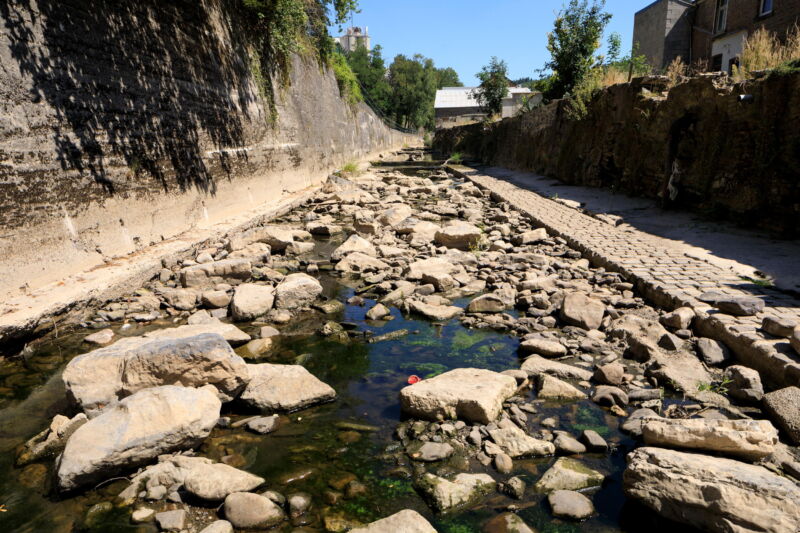
Enlarge / The Wamme river is seen at a low level during the European heatwave on Aug 10, 2022 in Rochefort, Belgium. (credit: Thierry Monasse/Getty Images)
The Arctic Ocean is mostly enclosed by the coldest parts of the Northern Hemisphere’s continents, ringed in by Siberia, Alaska and the Canadian Arctic, with only a small opening to the Pacific through the Bering Strait, and some narrow channels through the labyrinth of Canada’s Arctic archipelago.
But east of Greenland, there’s a stretch of open water about 1,300 miles across where the Arctic can pour its icy heart out to the North Atlantic. Those flows include increasing surges of cold and fresh water from melted ice, and a new study in the journal Weather and Climate Dynamics shows how those pulses can set off a chain reaction from the ocean to the atmosphere that ends up causing summer heatwaves and droughts in Europe.
The large new inflows of fresh water from melting ice are a relatively new ingredient to the North Atlantic weather cauldron, and based on measurements from the new study, a currently emerging “freshwater anomaly” will likely trigger a drought and heatwave this summer in Southern Europe, said the study’s lead author, Marilena Oltmanns, an oceanographer with the United Kingdom’s National Oceanography Centre.



0 Comments